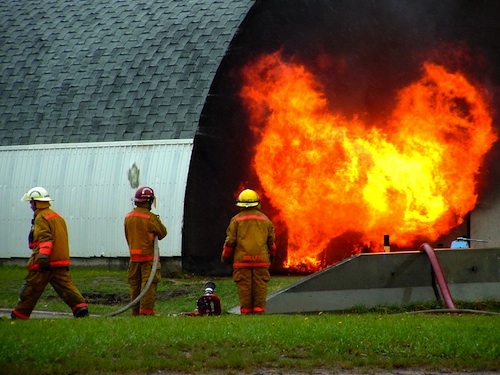Radio myth-buster #3

Commercial radio is ignoring potentially successful “hidden formats”!
It’s a conspiracy to keep innovative new formats, songs, artists, and talk voices from ever going to air.
Caused by ratings-obsession, ad-revenue, enormous profits for shareholders, creativity-suppressing research, narrow vision and lack of courage.
Reality or myth?
We all love a conspiracy theory. It’s an easy, simplistic view of how the world works, makes a great conversation-starter, and anyone can instantly kick-start a new one on social media.
And everyone in commercial radio has been bailed up, with BBQ research like “mate, if you want to lift your ratings all you have to do is cut your ads/play more new Aussie music/get rid of the OTT DJs/stop repeating songs etc”.
Your answer: “so why isn’t triple j Number 1?”

All due respect to triple j, a radio icon, but a commercial station faces hard realities in identifying and maintaining a financially viable market position.
A long, tough road from new concept to success
It’s called show business for a reason. The current TV series Smash is an excellent story about making a hit, with elements of truth in the fictitious “show within the show”.

Or the also excellent Howzat – Kerry Packer’s massive gamble on World Series Cricket.
The most creatively brilliant, new format idea, “so bleeding obvious why hasn’t someone done it before?” has to withstand the blow-torch of ROI scrutiny.
Your owners/shareholders aren’t going to fund the idea purely on the basis of your passion.
The directors are legally responsible for the sound governance of the company, so they need hard evidence of your idea’s viability.
Habit plays a major role in radio listening
Refer to my In the Loop article here

Breaking habit loops to support a new format is a 5-Step Launch Cycle involving everyone in the enterprise.
- Time
- Resources
- Patience&Persistence
- Courage
- More time, resources, patience&persistence, courage
Commercial radio is well aware of unfulfilled format options
Radio people are early-adopters by nature, and love the idea of trying something new.
Historically, programmers have always analysed local rivals, interstate, and OS stations to steal content and promotional ideas, or find the next big thing in formats.
It’s exciting to hear about new programming ideas breaking through in any part of the world.
And on our own doorstep, new formats can be found on digital, the AFTRS NextFM stream, and the New Zealand Broadcasting School’s 96.1FM with a long history of experimental commercial formats.
Existing listener research should continuously canvass new opportunities to do something different, to at least regenerate an existing format, if not find a new direction. It’s not just about defending the status quo!
Difficult for research to predict a new format’s share
People will enthuse about the concept being tested and express good intentions to listen.
But consumer marketing is littered with case studies of heavily resourced new products not fulfilling the research promise.
E.g. a rational, socially acceptable answer such as “I’ll definitely buy that new lite, vego snack” vs. the lizard brain really wanting Macca’s.

And how about pre-testing new TV shows? Vast resources and the latest neuroscience are applied to finding the next The Voice or MasterChef, and still a new show falls over.
Research can help you make an informed decision, but can’t make the decision for you
Launching a new media&entertainment product is always a heady mix of art, science and gambling.
No one has the complete answer! Or else they’ve long since made their millions and disappeared to the tax-free Bahamas.
It’s the 5-Step Launch Cycle plus homework, timing, luck, and determination to succeed. And, there’s inevitably a NY Times best-selling motivational book Heart, Smarts, Guts and Luck.
Executed creatively with an open mind, research helps increase the odds of success.
Do your homework!
Build audio and visual communications examples. Test what you can with potential target listeners. Rebuild based on the feedback, retest. As often as you can, for as long as you can, within your time and resources.
While intentions to listen come with a large grain of salt, the greater value is listening to real “listener language”, as they react to and discuss the concept. Ask for warts&all criticism. Relate it back to their daily listening habits.
Which station’s breakfast show habit is your greatest obstacle? No matter how innovative you are after 9am, you ultimately have to win breakfast in your target.
Find out everything you can about your target audience. Not only radio listening behaviour -that’s just the starting point.
Also their other entertainment and information consumption, social media participation, lifestyle, family, work, study, needs, aspirations, and concerns.
Because it’s not only about content, but also revenue opportunities based on your deep, intimate knowledge of your target.
Build your case

Present your owners with a professional, well-prepared, rationale.
That’s realistic, not wildly optimistic, about share projections, and potential revenue.
Your dream format is going nowhere without the number-crunching.
There’s no conspiracy against creativity
New formats are not being suppressed.
They’re just waiting, for a sound business plan!
And for you, to put in the hard yards and long hours of groundwork.
So, what’s your big new format idea?
Eriks Celmins is Managing Director of Third Wave Media, Adelaide-based consultant for media research, strategy and content.




